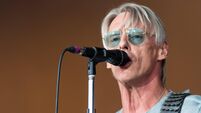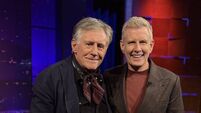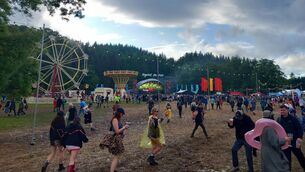Munster in 30 Artworks, No 21: Charles Kickham monument, Tipperary Town
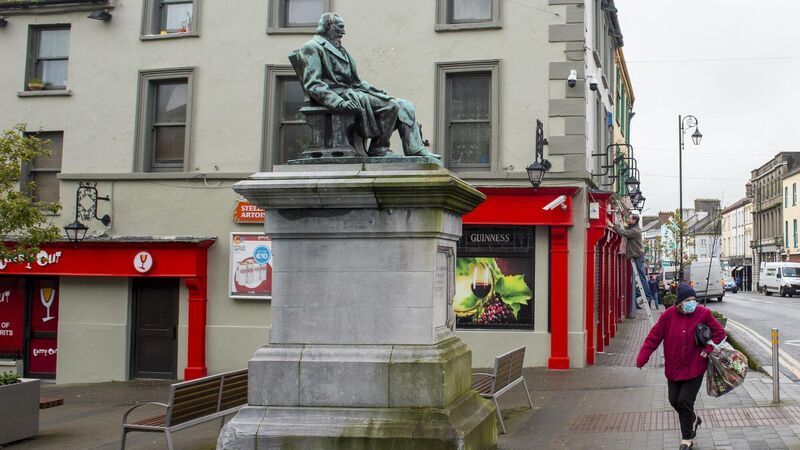
The statue of Charles J Kickham in Tipperary Town. Picture: Dan Linehan
Charles Joseph Kickham accomplished much before his passing, aged 54, in 1882. A poet, journalist and author, he is celebrated for his great novel of peasant life, , and for sentimental ballads such as 'Slievenamon'. He was also a founding member of the Irish Republican Brotherhood, and a sometime convict. His achievements were all the more remarkable when one considers that he was left mostly deaf, and with limited eyesight, after a flask of gunpowder exploded in his face in a hunting accident when he was 13.
Kickham is commemorated with a bronze statue in Tipperary town which depicts him seated, as if writing at a desk.
“In Tipperary, Kickham is remembered more for his cultural achievements than his politics,” says Dr Denis Marnane, author of , and the founder of Tipperary Historical Society.
“Everyone in the county has Knocknagow on their bookshelf, but no one has actually read it, which is the very definition of a classic. But everyone knows . Any time Tipperary people gather for an occasion, someone will sing it, usually while drunk.”
The Kickham statue was erected in 1898, around the same time as a slew of monuments were commissioned across the country to commemorate the centenary of the 1798 Rebellion.
“But that was just a coincidence, and most of those monuments were artistically awful. John Hughes did the Kickham statue, and it has a lot more merit.”
Kickham was a native of Mullinahone, County Tipperary but, as was often the case, the location for the Kickham monument was chosen by the committee convened to raise funds for its creation. “Some of the most prominent people involved were businessmen in Tipperary town, which is partly why the statue was located there rather than in Mullinahone. There was some talk of putting it in Clonmel, but that was opposed by Richard Bagwell of Marshfield House. There was also opposition from the Grand Jury, the forerunner of the local county council.”
The controversy over the statue was sparked by Kickham’s nationalist politics, which he had inherited from his family in Mullinahone. “The Kickhams were descended from Cromwellian planters, and were fairly prosperous. But over time, they had converted to Catholicism, and then become staunch nationalists.”
His father was a draper and property-owner who encouraged his literary interests. As a young man, Kickham began sending patriotic poems and articles to newspapers such as The Nation. His support for the failed Young Irelanders rebellion of 1848 led to a meeting with James Stephens, who would later employ him as a journalist on .
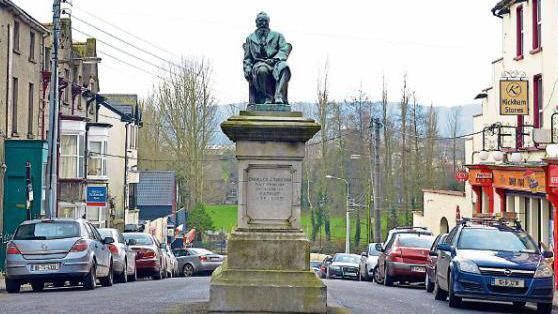
In Dublin, he helped Stephens found the IRB in 1858, and worked for the organisation alongside his activities as a journalist. In 1865, the police closed down and arrested its senior staff, including John O’Leary and Jeremiah O’Donovan Rossa. Kickham was sentenced under the Treason Felony Act and spent three years in prison in Woking from 1866. His time inside did nothing to temper his beliefs; on his release, he assumed the role of Chairman of the Supreme Council of the IRB.
“Kickham was a Fenian through and through, says Marnane. “He had no time for the Land League or the Land War, believing they were distractions from the real business of getting England out of Ireland.”
Despite his industry, and the success of novels such as , Kickham experienced poverty in his later years, exacerbated by the sale of his family’s property in Mullinahone. Towards the end, he lodged at the home of fellow journalist, and nationalist politician, James O’Connor, at Montpelier Place, Blackrock, Dublin, where he died of a paralytic stroke on August 22, 1882.
“Kickham’s remains were brought home from Dublin by train,” says Marnane. “The nearest station to Mullinahone was Thurles, where it was expected the coffin would be kept in the cathedral overnight. But Archbishop Croke was away, and the priest left in charge, Fr James Cantwell, refused permission, thinking it would be too controversial. So Kickham’s remains were kept overnight in a private house, and brought back to Mullinahone the next day.” Thousands joined in the funeral procession from Thurles, but Kickham’s burial in Mullinahone was completed without attendance by the clergy.
John O’Leary was one of those who helped raise funds to commemorate Kickham with a statue. Marnane thinks it was he who suggested Hughes for the commission. “O’Leary was above in Dublin, and more involved in cultural matters than the rest of the committee.” Hughes was Dublin-born, and was teaching sculpture at the Metropolitan School of Art at the time. “There are not that many pieces by Hughes in existence,” says Marnane. “Ironically, the best-known is probably his sculpture of Queen Victoria, which was originally erected outside of Leinster House.” That sculpture, unveiled in 1908, was the last of a British royal ever erected in Ireland, and proved controversial once Leinster House became the seat of parliament of the new Irish state. It has since been relocated to Sydney, Australia.
In Tipperary, the Kickham monument was better loved, and soon became a focal point for public meetings, particularly those of a nationalistic nature.
The statue is still well-maintained, and has seldom suffered vandalism. Apart from one memorable incident, prompted perhaps by Kickham’s literary prowess. “Originally, the statue had a quill in its hand,” says Marnane. “But somebody took it, and no one’s seen it since.”
- Further information: tipperarytown.ie/places/charles-kickham





